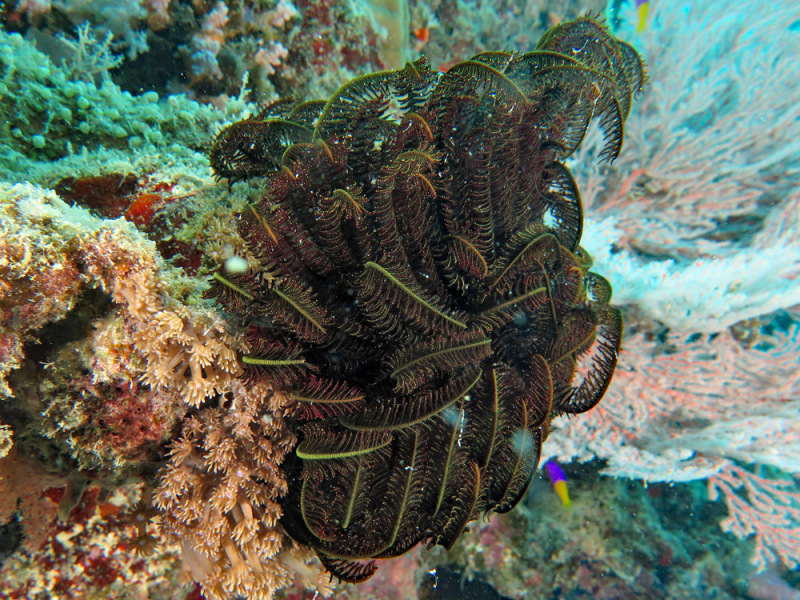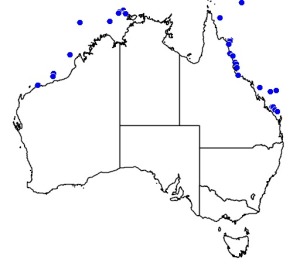
©Anne Hoggett: Underside of Clarkcomanthus alternans at Big Vicki's Reef, Lizard Island. Note absence of cirri, rays well-separated from each other and twisted so that arms are not all in the same plane.
Colours
Distinguishing features
Featherstars in the family Comatulidae are distinguished from all other featherstar families by having terminal segments of the oral pinnules modified to form a comb. Comatulids also have a distinctive "feel" due to well developed hooks on most pinnules that cause them to cling like velcro.
Clarkcomanthus alternans has numerous arms that are held quite stiffly in a bush-like posture. There are no cirri in adults, although very small specimens may have a few small cirri. The central part of the underside is characteristically uneven because each arm division is slightly twisted, even in small specimens.
Most individuals are dark brown or green/brown all over, often with fine paler speckles. Specimens with larger patches of white also occur. Juveniles are speckled with green or yellow on the underside.
Size
- Size data has not been obtained.
Depth range
- Depth range data is not yet available.
Synonyms
Distribution
Distribution and habitat preferences
Individuals are fully exposed or sometimes partly concealed, usually perching on hard corals or rubble or occasionally on sea whips. Having no cirri, they grip the substrate with "elbows" in their bent arms. Juveniles are more cryptic than adults, concealed under rubble or in crevices.
Clarkcomanthus alternans is present in low numbers at many localities around the Lizard Island group and it is moderately common in some areas, usually below 10 m depth.
Web resources
References
References that assist with identification
- Rowe, F.W.E., A.K. Hoggett, R.A. Birtles and L.L. Vail (1986). Revision of some comasterid general from Australia (Echinodermata: Crinoidea), with descriptions of two new genera and nine new species, Zoological Journal of the Linnean Society, 86: 197-277. LIRS catalog number 198.
- Summers, M. M., C.G. Messing and G.W. Rouse (2014). Phylogeny of Comatulidae (Echinodermata: Crinoidea: Comatulida): A new classification and an assessment of morphological characters for crinoid taxonomy, Molecular Phylogenetics and Evolution, 80: 319-339. LIRS catalog number 1813.






